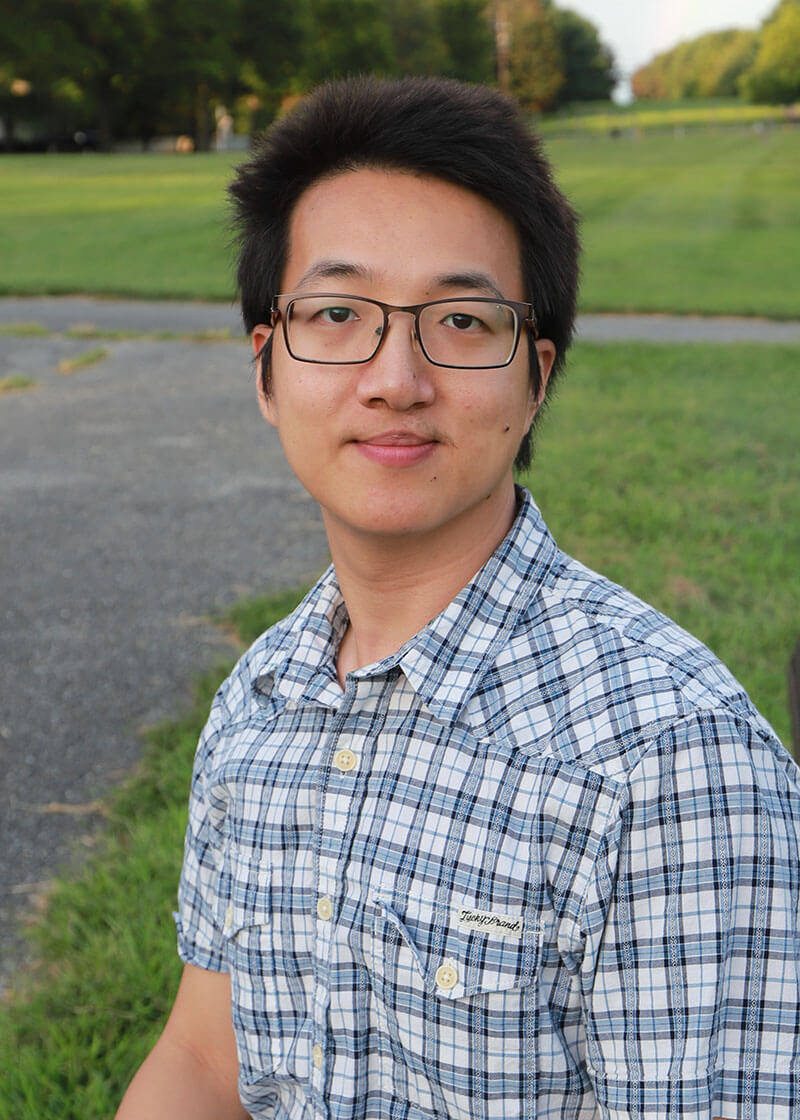Assistant Professor
ESH 4113
(205) 975-2276
Research Webpage
Research and Teaching Interests: Condensed matter theory, interaction-induced exotic phases and collective excitations, topological phases and materials, first-principles calculations, spintronics, spin-orbit coupling mediated quantum transport
Office Hours: By appointment
Education:
- B.S., Nanjing University, Physics
- Ph.D., University of Texas at Austin, Physics
I decided to become a theoretical physicist when I was fascinated with the biographies of great theoretical physicists and science-fiction novels in middle school. However, I realized that experiments play a fundamental role in physics because all exciting theories must be tested by the experiments in my undergraduate. My first research experience was to perform ultrafast optical experiments with the guidance of my undergraduate supervisors. This valuable experience involves designing interesting experiments, solving various experimental problems, analyzing the data with reasonable models, and writing up papers. This experience had strengthened my determination to apply for graduate school in the US to pursue my academic career.
In graduate school, my theoretical physicist's dream was reinvigorated when I met my Ph.D. advisor. I realized that the most interesting part of physics research for me is to understand how experiments work and make new predictions. In particular, I was fascinated by how electron-electron interactions can dramatically change the behaviors of materials until today. I devoted the bulk of my energy to studying how electrons and holes (the lack of electrons in a fully filled valance band) interact in emerging two-dimensional semiconductors and semimetals. I found that the bounded electron-hole pairs can not only form macroscopic condensates but also dramatically change topological phase transitions.
After graduating from UT, I became a postdoc at the National Institute of Standards and Technology (NIST). At NIST, I expanded my research area to study how to control magnetic properties of nanomaterials via spin-orbit coupling enabled effects such as the spin Hall effect. To make more accurate modeling of electronic structures and spin structures, I learned many first-principles calculations tools such as Quantum ESPRESSO and Wannier90. With these tools, I was able to study various ways to induce exotic spin currents to control the magnetization in different classes of materials such as reduced-symmetry two-dimensional semimetals and two-dimensional ferromagnets, and antiferromagnets. In August 2021, I was excited to join the UAB to start my own research group with a focus on the interplay between interaction, topology, and transport. I believe that many new interesting and puzzling phenomena and materials are waiting for us to discover which never ceases to amaze me. I am also devoted to working with students to achieve their own goals.
-
Research Interests
- Interaction-induced exotic phases and collective excitations in novel quantum phases of matter such as electron-electron Coulomb interaction in low-dimensional quantum materials and topological phase transitions.
- Quantum transport phenomena due to spin-orbit coupling in strongly correlated systems such as spin-orbit torque in heterostructures composed of low-dimensional quantum materials from first-principles calculation.
-
Recent Courses
- PH 420/520: Math Methods of Physics I
-
Select Publications
Complete lists of publications can be found on Google Scholar and Arxiv.
- F. Xue, P. M. Haney, “Current-induced magnetization and Neel order switching in two-dimensional antiferromagnets,” arXiv: 2104.05155.
- F. Xue, V. P. Amin, P. M. Haney, “Imaging the valley and orbital Hall effect in monolayer MoS2,” Physical Review B 102, 161103(R) (2020) (Rapid Communication).
- F. Xue, C. Rohmann, J. Li, V. P. Amin, P. M. Haney, “Unconventional spin-orbit torque in transition metal dichalcogenide/ferromagnet bilayers from first-principles calculations,” Phys. Rev. B 102, 014401 (2020).
- F. Xue, F. Wu, A.H. MacDonald, “Higgs-like modes in two-dimensional spatially indirect exciton condensates,” Physical Review B 102, 075136 (2020).
- X. Liu, A. Chanana, U. Huynh, F. Xue, P. Haney, S. Blair, X. Jiang, Z. Vardeny., “Circular photogalvanic spectroscopy of Rashba splitting in 2D hybrid organic-inorganic perovskite multiple quantum wells,” Nat. Commun. 11, 323 (2020).
- W. Bao*, X. Liu*, F. Xue*, F. Zheng, R. Tao, S. Wang, Y. Xia, M. Zhao, J. Kim, S. Yang, Q. Li, Y. Wang, Y. Wang, L.-W. Wang, A. H. MacDonald, X. Zhang, Observation of solid state Rydberg exciton polariton and its condensate in a perovskite cavity. Proc. Natl. Acad. Sci. USA 116, 20274-20279 (2019).
- F. Xue, A. MacDonald, “Time-Reversal Symmetry-Breaking Nematic Insulators near Quantum Spin Hall Phase Transitions,” Physical Review Letters 120, 186802(2018).
- F-C Wu*, F. Xue*, A. MacDonald, “Theory of two-dimensional spatially indirect equilibrium exciton condensates,” Physical Review B 92, 165121(2015).
